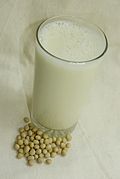Low-glycemic foods
Glycemic Index of Foods Explained
Understanding the role of Glycemic Index of Foods and its relationship with insulin resistance
What is the glycemic index?
Glycemic index is defined for each type of food, independent of the amount of food consumed. Glycemic load accounts for the amount of total carbohydrates consumed and their glycemic index. The glycemic index or GI is a measure of the effects of carbohydrates in food on blood sugar levels. It estimates how much each gram of available carbohydrate (total carbohydrate minus fiber) in a particular item of food raises a person's blood glucose level following consumption of the food, relative to consumption of glucose. Glucose has a glycemic index of 100, by definition, and most other foods tend to have a lower glycemic index.
Sugar Rush and Crash
High glycemic index foods such as French fries, bagels, white breads, white rice etc. with a lot of simple sugars release the glucose in to the blood stream very quickly thereby necessitating a high amount of insulin to be produced quickly. This sudden increase in blood sugar level requires high amounts of insulin to be released in a short time frame and is called "sugar rush". 2-3 hours after this, the body would have stored all the glucose in to fat and the high amount of insulin released leads to "sugar crash" where your sugars are crashing, and you may start craving for more carbohydrates again, thus setting in a vicious cycle of sugar rush and crash.
Glycemic index and insulin resistance
Consuming a low glycemic food item such as salad with 100 grams of carbohydrates is not going to have the same glycemic load as consuming 100 grams of carbohydrates in the form of table sugar, because the glycemic index of table sugar is 100 and that of salad is about 40. The insulin requirement of salad is much lower and much more gradual as opposed to that of consuming sugar, even though both these foods have the same amount of total carbohydrates. By consuming low glycolic index foods such as salads, glucose is released gradually in to the blood stream and therefore, there is no attendant sugar rush/sugar crash phenomenon at work.
Glycemic load
The Glycemic Load (GL) is a measure that takes into account both the glycemic index (GI) and the amount of carbohydrates in a serving of food. It determines how much a particular food can affect your blood glucose levels.
Calculating the GI load
To calculate the GL, you need to know both the food's GI and the amount of carbohydrates in a serving. The formula for calculating the GL is: (GI x the amount of carbohydrates (in grams) in a serving of food) ÷ 100.
For example, if you have a serving of white wheat pasta with a GI of 43 and 44 grams of carbohydrates, the GL would be 43 x 44/100 = 19g. If you halve the portion size, the GL would also halve. On the other hand, if you compare a small baked potato (GI = 80, carbohydrate = 15g) with an apple (GI = 40, carbohydrate = 15g), both containing the same amount of carbohydrates, the GL for the baked potato (80 x 15/100 = 12g) would be higher than that of the apple (40 x 15/100 = 6g).
The GI and GL of a variety of foods can be found using the GI search by the University of Sydney. Additionally, consuming low GI foods before endurance events can improve exercise capacity, while moderate to high GI foods are beneficial during the first 24 hours of recovery after an event to replenish muscle fuel stores.
While the GI can be a useful tool in making healthy food choices, it is not the only factor to consider. It is not necessary to choose all low GI foods, and there is room for moderate to high GI foods in a healthy diet. It is important to remember that by combining a low GI food with a high GI food, you will get an intermediate GI for that meal.
| Food Carbohydrates (gm) | Glycemic Index |
|---|---|
| Glucose has a GI value of 100 | HIGH GLYCEMIC FOODS |
| Baked potato, Russet, baked without fat ( 1 small potato, 5 oz.) | 85 |
| Waffles, Aunt Jemima (1 piece) | 76 |
| Gatorade (1 cup) | 78 |
| Grapenuts (approx. 1 cup, Kraft) | 75 |
| French Baguette | 95 |
| Bread, white (1 slice) | 73 |
| Bagel, (white, frozen) | 72 |
| Stuffing ( approx. 1 cup) | 74 |
| Graham wafers (approx. 1 cup) | 74 |
| Grape nuts (approx. 1 cup, Kraft) | 75 |
| Shredded wheat (1 oz. serving) | 75 |
| Total (1 oz. serving, General Mills) | 76 |
| Cream of Wheat (1 oz. serving, instant, Nabisco) | 74 |
| MEDIUM GLYCEMIC FOODS | |
| Spaghetti, (plain, cooked, 3/4 cup) | 61 |
| Rice (brown, cooked, 3/4 cup) | 60 |
| Raisin bran (1 oz. serving, Kellogg's) | 61 |
| Oatmeal (1 cup) | 66 |
| Bran muffin (large) | 60 |
| Green pea soup (1 cup) | 66 |
| Ice cream, regular(1/2 cup) | 61 |
| Blueberry muffin (1) | 59 |
| Raisins (1/4 cup) | 56 |
| Power bar, chocolate | 56 |
| LOW GLYCEMIC FOODS | |
| Apple | 34 |
| Orange | 42 |
| Banana | 52 |
| Grapes (1 cup) | 46 |
| Carrot (raw, 1 medium) | 47 |
| Sweet corn (1/2 cup | 54 |
| Dried apricots (1/4 cup) | 31 |
| Peas (1/2 cup) | 48 |
| Bread 100% whole grain (1 slice) | 51 |
| Orange juice (3/4 cup, 6 oz.) | 52 |
| Fruit yogurt (reduced fat, 3/4 cup) | 27 |
| Tomato soup (1 cup) | 38 |
| *Skim milk (1 cup) | 32 |
| While Milk (1 cup) | 27 |
| Baked beans (1/2 cup) | 48 |
| Lentils (1/2 cup) | 29 |
| Kidney beans (1/2 cup) | 28 |
| Lima beans (1/2 cup, baby, frozen) | 32 |
| Garbanzo beans (1/2 cup) | 28 |
Gallery of low GI foods
Low GI versus keto
Low glycemic foods and keto-friendly foods may have some similarities, but they are not the same thing.
Low glycemic foods are foods that have a low impact on blood sugar levels. They are absorbed slowly and release glucose into the bloodstream gradually, avoiding spikes in blood sugar. This makes them a good choice for people with diabetes or who are trying to regulate their blood sugar levels.
On the other hand, keto-friendly foods are foods that are suitable for a ketogenic diet. This diet is a low-carb, high-fat diet that aims to put the body into a state of ketosis, where it burns fat for energy instead of glucose. To achieve this, the diet requires a high intake of healthy fats, moderate protein, and a very low intake of carbohydrates.
While some low glycemic foods may also be keto-friendly, not all low glycemic foods are keto-friendly. For example, some low glycemic fruits, such as watermelon, are high in carbohydrates and are not suitable for a ketogenic diet. In contrast, some high-fat foods, such as avocado, are keto-friendly, but may not have a low glycemic index.
W8MD recommendations
W8MD recommends keto while actively trying to lose weight and low glycemic or keto while on maintenance.
Transform your life with W8MD's budget GLP1 injections from $75.00
W8MD Weight Loss, Sleep & Medspa Centers is a network of medical centers located in New York, and Pennsylvania, that provide comprehensive care for weight loss, sleep disorders, and aesthetic treatments. We can obtain insurance prior authorizations when coverage available.
Book appointments
Locations
W8MD location(s):
- NYC weight loss: NYC medical weight loss, sleep and medspa: 2632 E 21st St., Suite L3, Brooklyn, NY 11235 Contact: (718)946-5500
- Philadelphia weight loss - 1718 Welsh Road, 2nd Floor, Ste C, Philadelphia, PA 19115 (215)676-2334
- W8MD's Weight loss diet - Recipes (WikiMD)
- Links: Weight loss | Sleep medicine | Medical spa | Nutrition | Success stories |
- Diet pills: Phentermine, Phen/Topiramate, Wegovy, Saxenda, Zepbound, Mounjaro, Contrave, Diethylpropion etc.
- Resources: W8MD diet | Keto diet guide | Free Ebook | 12 Ways to lose weight quickly | 8 Amazing Weeks
- Tags:NYC medical weight loss, Philadelphia lose weight, Zepbound NYC, Budget GLP1 weight loss injections, Wegovy Philadelphia, Wegovy NYC, Philadelphia medical weight loss, Brookly weight loss and Wegovy NYC
![]()
![]()
![]()
![]()
You can now request appointments by text for all existing patients! Simply send your name, date of birth, and preferred date, location & time to Havila at (718) 207-7411.













































